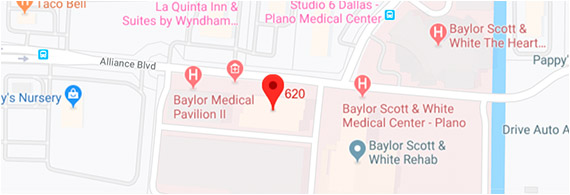Administering Eye drops in a Child’s eyes
My three year old woke up one Saturday morning with red eyes with mucus. Ugh…great way to start the weekend. My mind snapped to attention: no big deal. I’m an Ophthalmologist, I’ll get her some antibiotic eye drops and this will be history in a few days. A quick phone call and a trip to the Pharmacy yielded the necessary antibiotic eyedrops.
I summoned my three-year-old daughter and explained what I was about to do. She immediately started shrieking and running in circles. I failed miserably as I tried to reason with her: “You are a three-year-old…I am an Ophthalmologist…I’m very smart…and you must comply”. I was met with rejection. Trust me, nothing will test your nerves as a parent like this.
First Question: What is a parent Ophthalmologist to do?
- Be fast and sure. The Ophthalmic technicians in my office unanimously agree that 3-year-olds are the toughest age to get eye drops in. They are smart enough to see through your tricks and are strong-willed. Whatever technique you choose, be quick and decisive.
- Reasoning: Unless you are lucky to have a super-advanced child, reasoning with a 3-year old generally will not work. Showing the child pictures of a person with a bad eye infection may work in some instances.
- Force: Forcibly inserting the eye drops do not work well because the eye drops will wash out when the child starts crying. This should be an option of last resort but it may be necessary.
- If you must, be sure you to use the newer, more viscous antibiotic eye drops. A viscous Eyedrop, gel or ointment will stay on the eye longer.
- You need more than 1 set of hands: The child should be laying down flat. The person instilling the eyedrops should position the child’s head in between their legs. The helper will help hold the flailing hands and legs. Apply force on the lower eyelid to open it and then instill the Eyedrop from below. The eye has a protective reflex to look up if the eyelid is tightly closed: this makes it less likely that you will injure their cornea if they jerk suddenly.
- If the child is mildly cooperative, perform the following steps: Have the child lay down flat with their head turned slightly away from the side the eyedrops are going into. With the child’s eyes closed, place an Eyedrop at the corner of their eye (near the nose). Ask the child to open their eye and blink a few times.
- Bribery: This yields moderate success in these impossible situations. If my technicians need to instill dilating eyedrops in a toddler, they will do so with the promise of a lollipop, stickers, ice cream, a promise of a trip to Chuck-E-Cheese or their favorite park.
- Sleepytime: Put the drops in when the child is asleep. Luckily the newer viscous eye drops only have to be used twice a day or less.
Next Question: Are antibiotic eyedrops even required?
Young children usually get one of the following common types of conjunctivitis:
- Allergic conjunctivitis: this occurs when the eye or nasal tissues come in contact with an Allergen such as pollen. This is usually seasonal. It occurs suddenly in an otherwise healthy child (no recent cold or Upper Respiratory Infection (URI)) who has been outdoors. It is as associated with mild redness, intense itching, eyelid puffiness and running of the nose. The most important symptom is ITCHING. Treatment: An allergy eyedrops. No antibiotic is needed.
- Viral conjunctivitis: caused by a very contagious virus. Usually occurs as an epidemic (other kids at school have it). It usually will start in one eye and go to the other eye after a day or two. Symptoms include intense tearing (usually clear but may have a mild yellowish tinge), mild eye redness, an inflamed lymph node in front of the ear (on the side with the tearing) and an accompanying upper respiratory infection. Treatment: cold compresses and artificial tear eyedrops. An Allergy Eyedrop may help with the itching. No antibiotics are necessary.
- Bacterial Conjunctivitis. Caused by a bacteria and usually occurs in a toddler with a pre-existing sinus infection, ear infection, bronchitis, strep throat or other upper respiratory infection. Symptoms include thick yellow-green mucus discharge from the eyes, redness, mild fever and aforementioned upper respiratory infection. Treatment: antibiotic eyedrops will shorten the length of symptoms. Sometimes treating the URI with oral antibiotics (by your pediatrician.) will help with the eye infection.
- Other causes: There are other less common causes of conjunctivitis in toddlers. If your child’s symptoms are concerning or not improving, be sure to see your Eye Doctor.
 Sidney Gicheru, M.D. is a Board Certified Ophthalmologist and LASIK surgeon at LaserCare Eye Center (for more information go to dfweyes.com In addition to LASIK, he performs Refractive Cataract surgery ( ReSTOR, Crystalens, and Toric lens implants). For more information call 214-328-0444 or 817.481.2727.
Sidney Gicheru, M.D. is a Board Certified Ophthalmologist and LASIK surgeon at LaserCare Eye Center (for more information go to dfweyes.com In addition to LASIK, he performs Refractive Cataract surgery ( ReSTOR, Crystalens, and Toric lens implants). For more information call 214-328-0444 or 817.481.2727.




